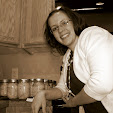Image courtesy of U.S. Department of the Treasury
Having some cash on hand is an important part of any Emergency Plan. In case of an emergency that causes ATMs or credit card machines to go down, you will need cash to get yourself gas, food, transportation, etc.
Remember to have a variety of money, mostly smaller amounts because you never know if someone will be able to make change.
You may want to have a few hundred dollars in your Emergency Binder as well as some in your car.
In addition to having emergency cash, saving at least $1000 in a checking or savings account can help you have peace of mind in the event that you need new tires or another unexpected event.
We recently were able to travel to Washington state to be with family after my husband's uncle passed away. This is the first trip in which we have not had to go into credit card debt. Of course, now we have to build up our savings. That is frustrating sometimes. But our kids were able to see their grandparents, 3 great-grandparents and lots of aunts, uncles and cousins who they may not have ever met otherwise.
It is recommended that we have 3-months of our family income in savings. But remember, just do one thing at a time.
So...let's review:
1. Have $100-200 CASH in your home and/or car. (Remember to have small increments: $1, $5, $10 and $20.)
2. Build up $1000 in checking or savings. (Or in cash, if you prefer.)
3. Save 3 months worth of your family income. (Make a goal, keep your budget and don't get discouraged!)








